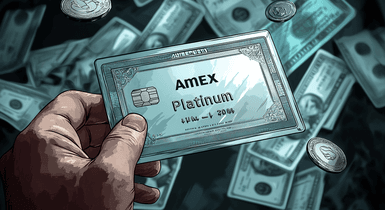Chase Debit Card Foreign Transaction Fee: Complete Guide for Travelers
Contents

Unexpected bank fees are the last thing you want when exploring a new country. If you are a Chase debit card user planning a trip overseas, be aware of Chase Bank international fees applied to transactions processed in another currency or country.
In this guide, we’ll explain how the Chase debit card foreign transaction fee works, when it applies, how much it costs, and what you can do to minimize or avoid it while traveling.
1. Does Chase Charge Foreign Transaction Fees?

A foreign transaction fee is a surcharge your bank adds when you make a purchase in a currency other than USD or when a payment is processed through a non-US bank. These fees help banks cover the cost of currency conversion and international processing. They’re usually calculated as a percentage of the total amount. In a word, the more you spend, the more you pay.
Does Chase have foreign transaction fees? The short answer is “yes.” However, not all cards are created equal when it comes to international banking with Chase. Thus, many travel-oriented Chase credit cards carry no foreign transaction fees, while debit cards linked to standard checking accounts do carry a Chase international fee.
Currently, the Chase Bank foreign transaction fee is 3% of the purchase amount after conversion to USD. It applies whenever you use your debit card to:
- Shop online with non-US merchants.
- Pay in stores, restaurants, or hotels abroad.
- Withdraw cash from ATMs outside the US.
- Make cash transfers involving currency exchange.
Even if your card offers rewards or points for purchases, those benefits can be outweighed by the added charges while traveling abroad.
2. Chase ATM Withdrawal Fees Abroad
Frequent travelers know that going abroad often means relying on cash. However, with a Chase debit card, withdrawing money from foreign ATMs comes with multiple fees.
Fee type | Amount | When it applies |
|---|---|---|
Chase foreign ATM fee | $5 | Every time you use a non-Chase ATM abroad |
Chase international transaction fee | 3% | All cash withdrawals in foreign currency or those that are processed via a non-US bank |
Local bank/ATM operator fee | Varies by country and ATM provider | Charged by the ATM owner |
Currency conversion costs | Integrated into the exchange rate set by Visa or Mastercard | Anytime USD is converted to local currency |
When pulling out cash from foreign ATMs, an ATM network operator usage fee can be either a flat rate, normally ranging from $2 to $6, or a percentage-based fee of the withdrawal amount. Whatever the case, that fee is most often displayed on-screen before completing your withdrawal, giving you the option to cancel the transaction.
Considering Chase’s 3% fee plus ATM charges, withdrawing an equivalent of $100 abroad could potentially cost you up to $14, depending on the country and bank.
3. How Dynamic Currency Conversion (DCC) Affects You

Dynamic Currency Conversion (DCC) is a service offered by foreign ATMs and merchants that automatically converts the local currency into USD at checkout. While it’s nice to see the price in habitual dollars, this convenience comes at a steep price.
With DCC, it’s a local ATM operator or merchant that sets the currency conversion rate instead of more favorable rates from Visa or Mastercard. And that rate usually comes with a hefty 3% to 8% markup on top of Chase’s fees. A profitable venture for ATM providers and merchants, DCC makes you lose money for no reason at all.
To avoid unnecessary overcharges:
- Always choose to pay in the local currency to win better exchange rates and skip extra fees with your Chase debit card currency conversion.
- Be alert at ATMs, since many operators make DCC a default option. Pay close attention to the prompts and select local currency.
- Double-check fees and watch out for merchants who might try to push DCC on you.
- Use a card with no foreign transaction fees so you get the most favorable exchange rate without extra charges.
4. How to Avoid Foreign Transaction Fees with Chase

While the answer to the question “Does a Chase debit card have foreign transaction fees?” is “yes,” with a little planning and awareness, you can cut them down or dodge them altogether. Here are some tips to help lighten the load of Chase debit card international fees.
Choose a Card With No Foreign Transaction Fees
To maximize the benefits of your Chase checking account abroad, consider a Chase Sapphire or Chase Private Client card. This way, you avoid a foreign exchange rate adjustment when making payments or cashing out funds, and skip a Chase ATM withdrawal fee when cashing out funds.
Get Ready in Advance
To minimize your Chase debit card use when traveling overseas, you can exchange some cash in advance before setting out on a trip. Most US banks, including Chase, will offer currency exchange covering the most popular and widespread global currencies.
Withdraw Cash Strategically
If you still need to use an ATM abroad, consider taking out larger amounts less frequently to minimize per-withdrawal charges.
Choose to Be Charged in Local Currency
To benefit from fair exchange rates and avoid extra fees and inflated rates in addition to your Chase debit foreign transaction fee, opt for paying in local currency.
Explore Other Payment Methods
In some destinations, services like Wise, Revolut, or PayPal with favorable currency conversion rates can be a cost-effective alternative to using your debit card for certain payments. Just compare their exchange rates and pick the best option for your needs.
Consider Chase Offers for International Spending
Check your Chase account for targeted travel offers. The bank often partners with global merchants, hotels, or airlines to give extra cashback or bonus points, stacking rewards with your fee-free purchases.
Prepay Some Expenses Before Travel
By booking hotels, tours, or activities in advance through US-based platforms, you can lock in a price in dollars and avoid conversion fees entirely.
5. Can I Use My Chase Debit Card Internationally?

Your Chase debit card is accepted in most countries around the world. Running on global networks like Visa or Mastercard, it works for both ATM withdrawals and everyday purchases abroad. As such, it’s a safe and convenient way to access your money while traveling. However, though the bank doesn’t require a formal “travel notice”, informing them via the Chase mobile app or customer service can prevent transactions from being flagged as suspicious and declined.
One more important thing to keep in mind is the daily withdrawal and purchase limits set for your Chase debit card. They vary depending on your account type, from $100 to $2,000 for non-Chase ATM withdrawals and from $400 to $7,500 for purchases. Before your trip, you can request a temporary limit increase by calling Chase, especially if you plan to make large purchases or cash withdrawals abroad.




